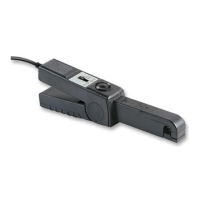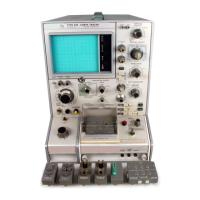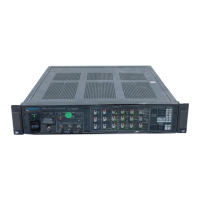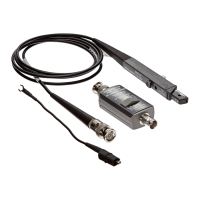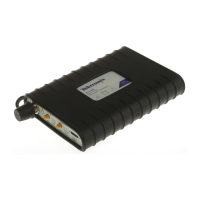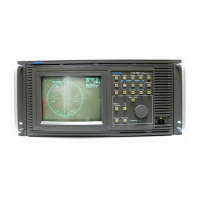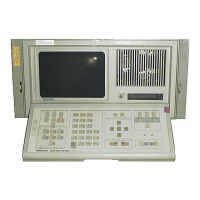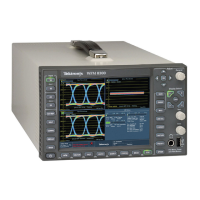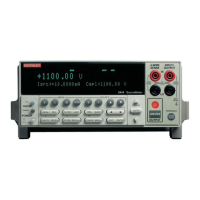Operating Instructions-AA
501
distortion may be obtained by measuring only the
difference frequency (in this example 1 kHz). If only the
low frequency component is measured, it is called a CClF
second order difference frequency distortion test.
To measure two tone difference frequency distortion
the device is excited with two input signals as described
above. The output of the device is low-pass filtered to
extract the difference frequency. The level of this compo-
nent is expressed as a percentage of the high frequency
signals and is another measure of nonlinearity.
The AA 501 CCIF difference frequency mode will
accept any pair of input frequencies which are within
limitsas listed in
thespecification section. Theamplitudes
of the two signals should be equal.
IM
Distortion Measurement Procedure (Option
01)
Intermodulation and THD testing aresimilar, using the
AA 501 (Option
01 only). After
connectingtheappropriate
signal source to the device under test, set the INPUT
LEVEL RANGE as described in the THD section. Press the
IMD FUNCTION button and select a distortion range.
Selecting AUTO RANGE or dB provides automatic rang-
ing. The AA 501 accepts either a SMPTE,
DIN, or a CCIF
difference frequency test signal. Selection between the
necessary analyzing circuits is accomplished
automatically.
There is a moveable jumper inside the AA 501 to allow
selection of SMPTE-DIN, CClF or automatic selection
between the two modes. Defeating the automatic test
selection circuitry is recommended if making
inter-
modulation distortion measurements greater than 20%.
Refer any jumper changes to qualified service personnel.
The
LO
PASS filters may beselected inthe IM mode but
will have little effect. The 400 Hz HI PASS and the 'A'
WEIGHTING filters will cause erroneous readings
because the
IM components of interest generated by the
tests fall between 50 Hz and
1
kHz. These filters, when
activated in the
IM mode attenuate someof the frequency
components being measured.
Filters
The five buttons along the right edge of the instrument
allow selection of four built-in frequency weighting filters
plus an external filter, as desired. See Fig.
2-9for response
curves of the various filters. The 400 Hz, 30 kHz and
80 kHz filters are all 3-pole (18 dB per octave
rolloff)
Butterworth alignment. They are placed in the measuring
circuitry immediately before the average or rms detectors.
These filters are functional in all modes of operation and
affect the signal at the FUNCTION OUTPUT connector.
Check the position of all filter pushbuttons before
making measurements to prevent inaccurate results.
Filtering takes place after all gain circuits. It is possible to
overload part of the instrument, when operating in the
manual distortion ranges with a filter selected, even
though the display is not overranged. This may be
checked by releasing the filter pushbuttons and checking
the display for overrange or by pressing the AUTO
RANGE pushbutton.
The 400 Hz HI PASS filter is used to reduce the effects
of hum on the measurement. Although the differential
input and common mode rejection of the AA 501 reduce
the effects of ground loops, extremely bad measurement
conditions may require use of this filter. The device under
test may also generate an undesirable amount of hum.
limiting the noise and distortion residuals obtainable. This
filter may be used when measuring level or harmonic
distortion of signals at about 1 kHz or greater. This filter
should not be used when measuring signals less than
1
kHz nor when measuring intermodulation distortion.
Use of the 80 kHz LO PASS filter reduces the effects of
wideband noise and permits measurement of lower
THD
+N for input signals up to 20 kHz. For 20 kHz inputs, it
allows measurement of harmonics up to the fourth order.
Do not use this filter if harmonic components above
80 kHz are of interest. When checking noise the 80 kHz
filter may be used to reduce the measurement bandwidth.
However, for most noise measurements, the 30 kHz LO
PASS or 'A' WEIGHTING filters are recommended as they
correlate better with the perceived noise level.
The 30 kHz LO PASS filter provides bandwidth limiting
for broadcast proof of performancetesting. It is also useful
for unweighted noise measurements on audioequipment.
providing an equivalent noise bandwidth of 31.5 kHz.
When the 30 kHz filter is used, the 80
kHzfilter is disabled.
It may be desirable to modify the 30 kHz filter so that it
conforms to the 22.4 kHz IEC standard for audio noise
measurements. This may be performed by qualified
service personnel as described in the Service section of
this manual.
The 'A' weighting filter is used when measuring the
subjective noisiness of audio equipment. It conforms to
the noise measurement standards of the Institute of High
Fidelity (IHF). The filter shape is within ANSI, DIN, and
IECQtandards for class 1 sound level meters.
International Electrotechnlcal Commlssion. Publlcatlon
179,
second edition, Precision Sound Level Meters,
1973,
Central
Office of IEC (sales
department),
1,
rue de Varembe',
1211
Geneva
20
Switzerland.
ENGLISH
2-11

